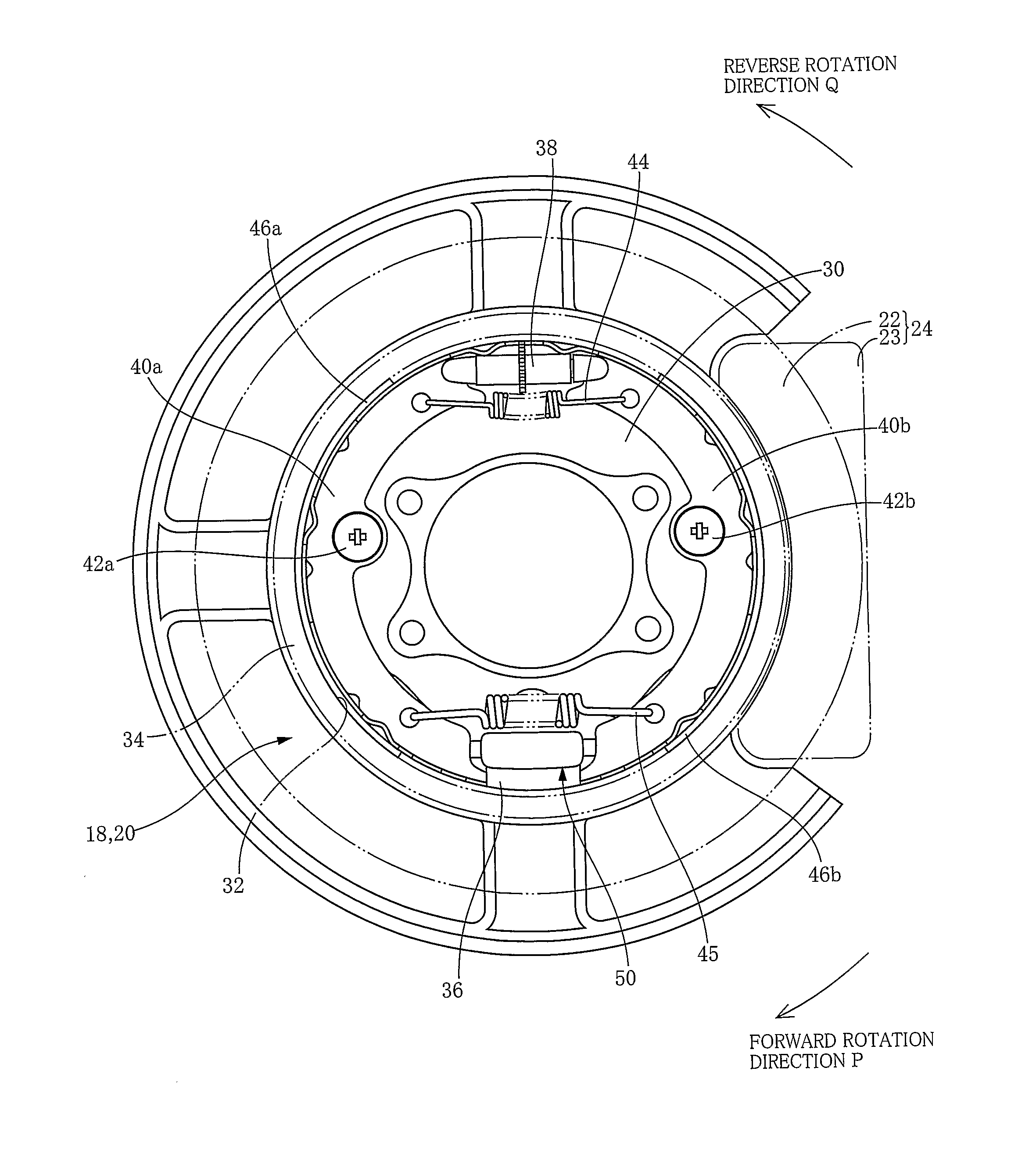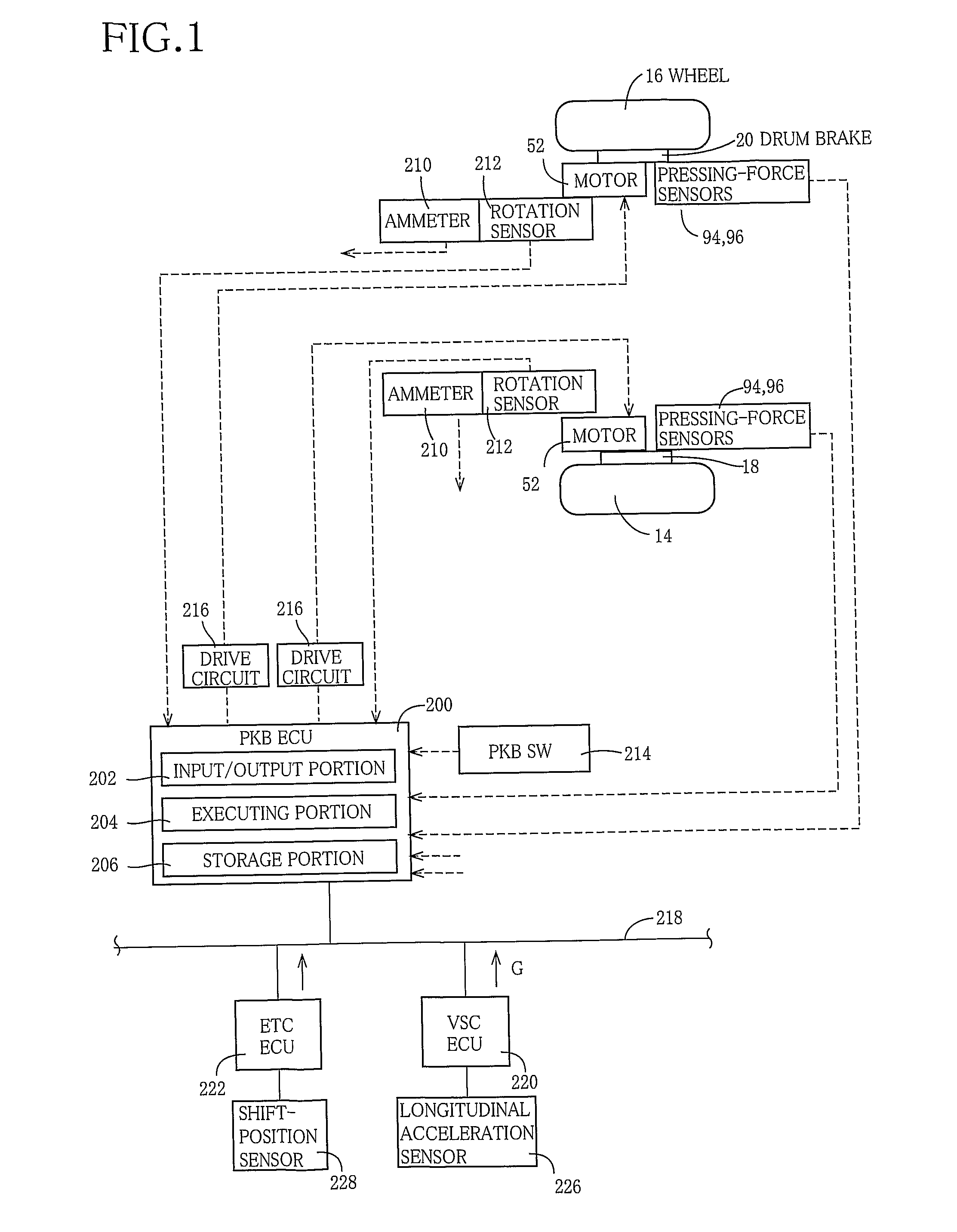Parking brake system
a brake system and parking technology, applied in the direction of brake systems, drum brakes, actuators, etc., can solve the problems of making other brake shoes difficult to be separated from the anchorage, and achieve the effect of reducing the brake force, facilitating movement, and facilitating movemen
- Summary
- Abstract
- Description
- Claims
- Application Information
AI Technical Summary
Benefits of technology
Problems solved by technology
Method used
Image
Examples
Embodiment Construction
[0164]There will be described embodiments of the present invention, by reference to the accompanying drawings. It is to be understood that the present invention is not limited to the following embodiments, and may be otherwise embodied with various changes and modifications, such as those described in the foregoing “MODES OF THE INVENTION”, which may occur to those skilled in the art.
[0165]Referring first to FIGS. 1-18, there will be described a parking brake system constructed according an embodiment of the invention. In FIG. 1, reference signs 16, 14 denote rear right and rear left wheels of a vehicle, respectively, and reference signs 18, 20 denote drum brakes that are provided for the respective wheels 14, 16. As shown in FIG. 2, each of the drum brakes 18, 20 is a duo-servo drum brake that is incorporated in the parking brake system. Since each of the drum brakes 18, 20 functions as a parking brake, it will be hereinafter referred to as a parking brake where appropriate. In FIG...
PUM
 Login to View More
Login to View More Abstract
Description
Claims
Application Information
 Login to View More
Login to View More - R&D
- Intellectual Property
- Life Sciences
- Materials
- Tech Scout
- Unparalleled Data Quality
- Higher Quality Content
- 60% Fewer Hallucinations
Browse by: Latest US Patents, China's latest patents, Technical Efficacy Thesaurus, Application Domain, Technology Topic, Popular Technical Reports.
© 2025 PatSnap. All rights reserved.Legal|Privacy policy|Modern Slavery Act Transparency Statement|Sitemap|About US| Contact US: help@patsnap.com



